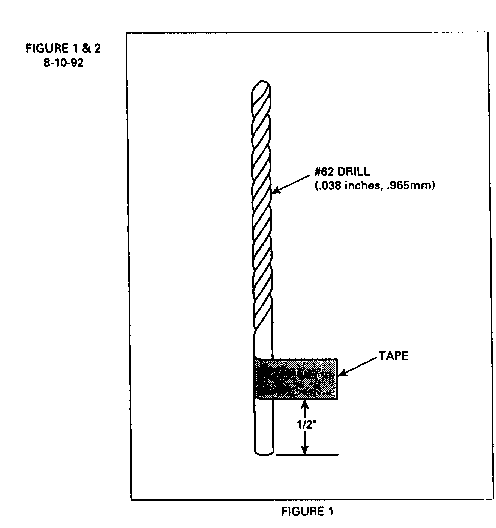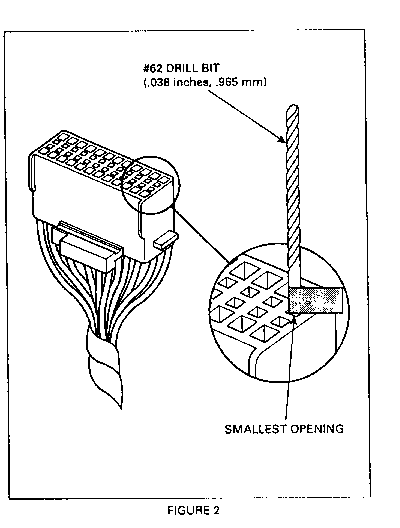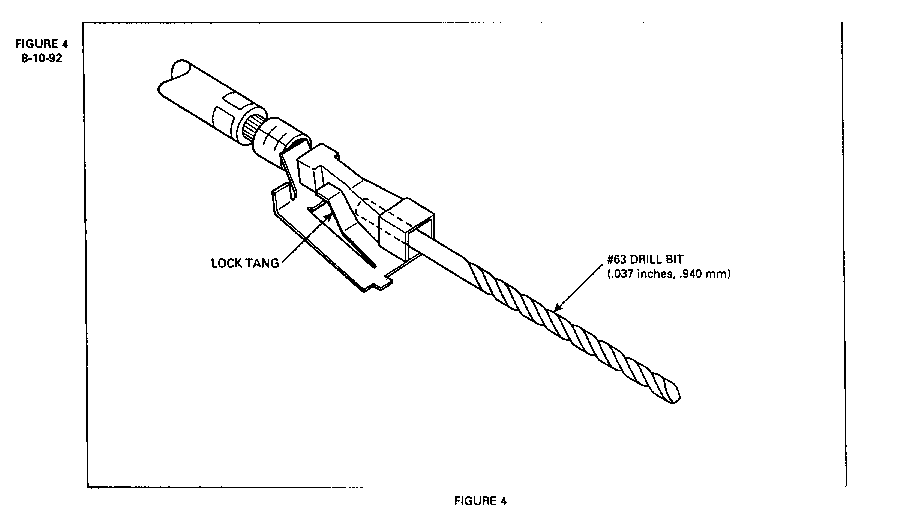VARIOUS DRIVEABILTY CONDITIONS (REPAIR OVERSIZED TERMINALS)

SUBJECT: VARIOUS DRIVEABILITY CONDITIONS (REPAIR OVERSIZED TERMINALS)
MODELS AFFECTED: 1992 ROADMASTER, ROADMASTER ESTATE WAGON, RIVIERA AND SKYLARK MODELS
CONDITION:
---------- Some owners of the vehicles listed below may experience various driveability conditions such as reduced fuel economy, SES light, runs rough, misses, etc. (specific concerns are described in the following paragraphs). If diagnosis indicates a need to replace any engine control system components (example, ECM or sensors), check suspect connector terminals and repair if necessary prior to replacing the control system component.
CAUSE:
------ The condition may be a result of intermittent or open circuits caused by insufficient contact between the ECM harness female terminal and the mating ECM male pin. Some of the 12089649 micro-pack 100 series female terminals (formerly P/N 12020757) could have an oversized contact area condition.
NOTE: Either terminal part number may be used in repair.
VIN BREAKPOINTS:
Suspect vehicle VIN breakpoints are:
Beginning VIN Ending VIN ------------- ---------- Willow Run: ----------- NW408277 NW408934
Arlington:
---------- NR460609 NR468100
Hamtramck:
---------- NU007780 NU009103
Lansing:
-------- NC648484 NC651304
SYMPTOMS (Passenger Car)
Connector Cavity/ Engine Options Circuit(s) Wire Color Symptom(s) ------ ------- ---------- ---------- ---------- 1992 Caprice/Custom Cruiser/Roadmaster -------------------------------------- All All 419 A5/BRN/WHT 1. SES light will SES light driver not illuminate
All All 467 D16/DkBLU 1. Detonation Injector 1 2. No power 3. Hard start All All 468 D14/DkGRN 4. Rough idle Injector 2 5. SES light "on" (if circuit 419 okay) 6. Code 43 and/or 44 stored 7. No start if both circuits open 8. Miss 9. Hesitates 10. Surge 11. Quit 12. Intermittent circuit may or may not set codes
------------------------------------------------------------------------------ 1992 Riviera ------------- 3800 (L27) All 630 A12/BLK 1. SES light "on" VIN L Cam sensor 2. Code 41 stored 3. Stalls 4. Runs rough
------------------------------------------------------------------------------ 1992 Corsica/Beretta -------------------- 3.1L (LH0) All 410 E16/YEL 1. SES light "on" VIN T Cool. temp. 2. Code 15 stored sensor 3. Runs rough 4. Hard start 5. Floods (except in very cold ambient) 6. Reduced fuel economy 7. Exhaust odor 8. No power 9. Cooling fan always on under 35 MPH 10. Intermittent circuit may or may not set code 15 11. Intermittent circuit will cause erratic Tech 1 readings
------------------------------------------------------------------------------ 1992 Grand Am/Achieva/Skylark ----------------------------- 2.3L (LD2) All 888 C15/DkBLU 1. SES light "on" VIN D Injectors 2/3 C13/DkBLU 2. Codes 44 and/or 65 stored (L40) All 3. No start VIN 3 4. Stalls (LG0) All 5. Hard start VIN A 6. Detonation 7. No power 8. Intermittent circuit may or may not set codes
------------------------------------------------------------------------------
3300 (LG7) All 639 A6/PNK/BLK 1. Stalls VIN N Ignition 2. Stumbles 3. SES light flashing 4. No codes stored 5. No SES light 6. No start 7. No ALDL data 8. Intermittent circuit will cause erratic Tech 1 readings
CORRECTION:
----------- 1. To check for an oversize female terminal, use a #62* drill bit (.038 inches, .965 mm) and place a mark 112 inch up from the bottom of the shank of the drill bit. Place a flag made from tape at the mark on the drill (see Figure 1).
2. Remove connector from ECM and hold connector vertically up.
3. Place shank of #62* drill bit (.038 inches, .965 mm) in connector cavity of suspect terminal. Do not push on drill (see Figure 2).
4. Repair any terminal allowing drill bit to fall unassisted to the flag on a drill bit. Any terminals having resistance or drag or not allowing drill to enter terminal are okay and do not need repair. Repair any oversized terminal as described in steps 5 through 8.
5. Remove the TPA (terminal position assurance) from the connector.
6. Remove the terminal from the connector using terminal removal tool GM 12031876-1 (Kent-Moore Tool No. J 38125-A).
7. With a pair of small needle nose pliers, resize the contact area of the terminal as shown in Figure 3.
8. To verify the terminal has been adequately sized, insert a #63* drill bit (.037 inches, .940 mm) into the contact area as shown in Figure 4. If resistance can be felt against the bit in the resized area, resizing is complete. If no resistance is felt, repeat steps 7 and 8.
9. Raise the terminal lock tang (Figure 4) so the terminal can be properly held in the connector.
10. Reinsert the terminal into the proper connector cavity.
11. Reinsert the TPA into the connector.
12. If the terminal becomes severely damaged by using this method, replace the terminal using established terminal replacement procedures.
13. Reinstall harness to ECM and perform any required relearn procedure prior to continuing diagnosis.
* NOTICE: Measure drill to ensure drill is of proper diameter. A larger sized drill will damage a good terminal.
WARRANTY INFORMATION:
Use applicable labor operation and time allowances.




General Motors bulletins are intended for use by professional technicians, not a "do-it-yourselfer". They are written to inform those technicians of conditions that may occur on some vehicles, or to provide information that could assist in the proper service of a vehicle. Properly trained technicians have the equipment, tools, safety instructions and know-how to do a job properly and safely. If a condition is described, do not assume that the bulletin applies to your vehicle, or that your vehicle will have that condition. See a General Motors dealer servicing your brand of General Motors vehicle for information on whether your vehicle may benefit from the information.
